Skip to content
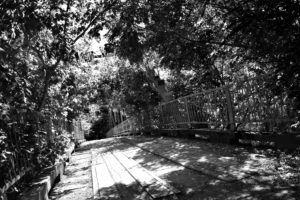
What? You want another Texas ghost story to usher in Halloween? Well, who am I to say no to such a reasonable request . . .
Hear the word “Denton,” and you might thing of University of North Texas or Texas Women’s University.
But being the lover of ghostly tales that I am, my “to see” list recently included the Old Alton Bridge . . . known to locals and students as Goatman’s Bridge. According to legend if you go down to the bridge at night, turn off you headlights and honk twice – you’d see the glowing red eyes of the Goatman himself on the other side.
Now let’s clear something up to start with you can’t actually drive across the bridge (any more). It has been blocked off as a pedestrians only bridge. There is even a wonderful art installation that lights the beams with multicolored lights at night. Fun to stop and see even if you aren’t looking for something otherworldly.
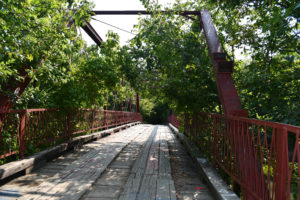
Back when the bridge was built in 1884 over Hickory Creek, it was a busy thoroughfare. Now it’s one of those beautiful relics with a web of cast iron arching over creaking wood plank decking. A spot that has become oh-so-popular with thrill seekers and ghost hunters.
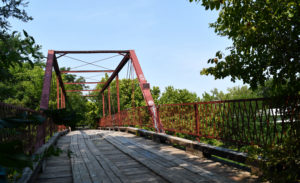 Since the 1930s several different versions of the Goatman tale have circulated among locals. After all, most local legends are passed down verbally and change just a bit with each telling.
Since the 1930s several different versions of the Goatman tale have circulated among locals. After all, most local legends are passed down verbally and change just a bit with each telling.
The most popular version of the story relates the tale of an African-American named Oscar Washburn and his family who kept a herd of goats near the bridge. They made a good living from the animals’ meat, milk, cheeses and hides. But when the man hung a sign on the bridge directing his customers with the words “This way to the Goatman,” the local Ku Klux Klansmen were offended by his pride.
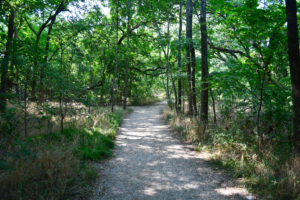 Late on a dark night in 1938, a lynch mob stormed the family’s shack and dragged the screaming Goatman to the bridge, where they put a noose around his neck and flung him over the side. And there’s a twist to the story: when the marauders went down the banks of the creek to admire their handywork…the noose was empty and Washburn was nowhere to be seen.
Late on a dark night in 1938, a lynch mob stormed the family’s shack and dragged the screaming Goatman to the bridge, where they put a noose around his neck and flung him over the side. And there’s a twist to the story: when the marauders went down the banks of the creek to admire their handywork…the noose was empty and Washburn was nowhere to be seen.

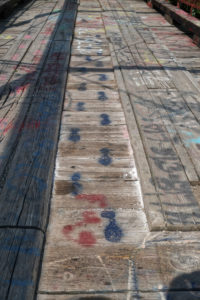 Thinking he had escaped, they went back to the shack and set in on fire – with the unfortunate family inside – to lure Washburn out of the woods. But he was never seen again . . . at least in the flesh.
Thinking he had escaped, they went back to the shack and set in on fire – with the unfortunate family inside – to lure Washburn out of the woods. But he was never seen again . . . at least in the flesh.
Stories advise seekers of the vengeful spirit to knock three times on the bridge, or honk their car horn to summon the spirit. They even say that the Goatman will take his revenge on anyone who dares to summon him that is of the same bloodline as one of the murderers. (So it might be wise to do a bit of genealogy before you go!)
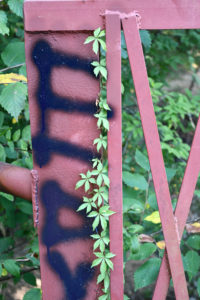 Goatman legends exist in several other towns in Texas and several other states, with slight variations. They probably serve more as a warning of morality than a reminder of an actual historical event. No African American named Oscar Washburn lived in the area at the time, and there were no reports of lynchings in 1938. But visitors persist in reporting strange smells and sights, being touched or grabbed and hearing snarling coming from the woods.
Goatman legends exist in several other towns in Texas and several other states, with slight variations. They probably serve more as a warning of morality than a reminder of an actual historical event. No African American named Oscar Washburn lived in the area at the time, and there were no reports of lynchings in 1938. But visitors persist in reporting strange smells and sights, being touched or grabbed and hearing snarling coming from the woods.
If you want to stop at Denton’s Goatman Bridge and tempt fate for yourself . . . be my guest!
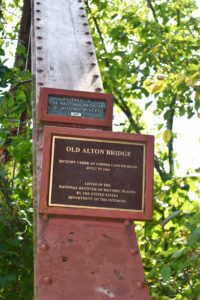
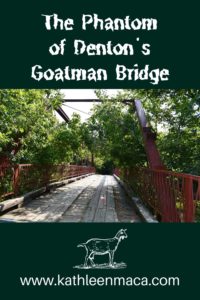

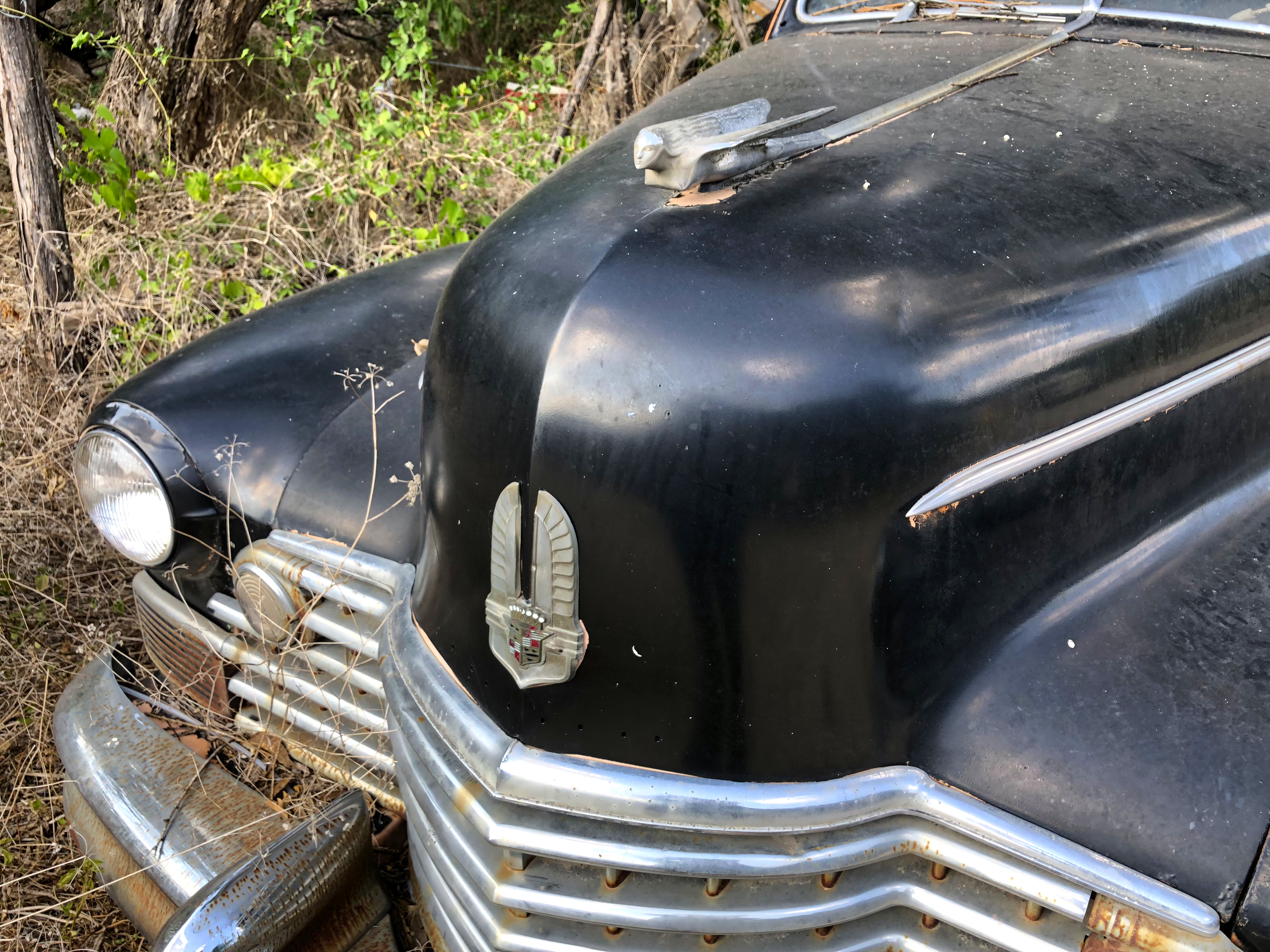
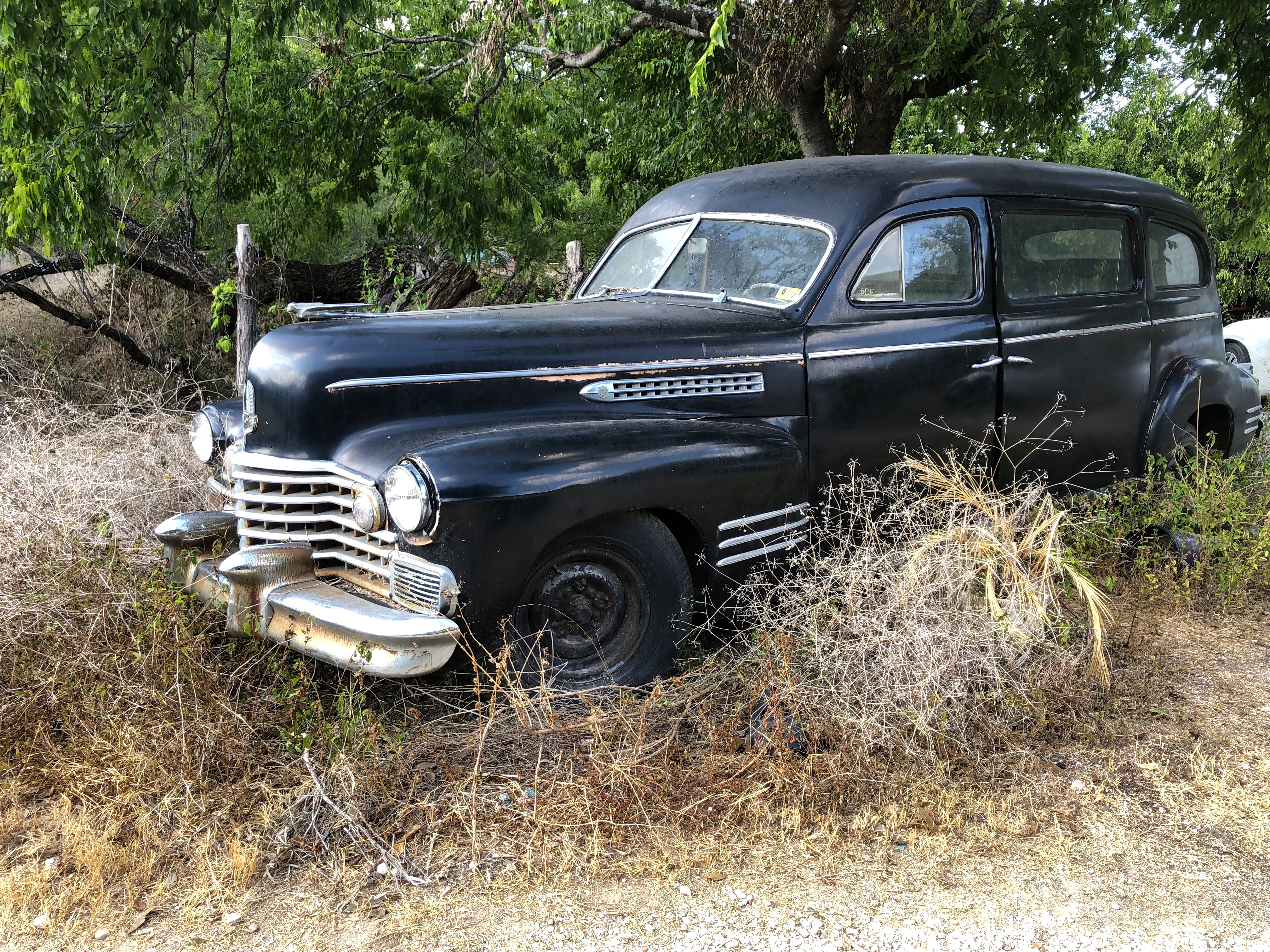 Have you ever heard of San Antonio’s Black Swan Inn? Sounds elegant, doesn’t it? The 150-year-old Greek Revival named after Shakespeare’s favorite bar looks like an iconic Southern mansion. It’s now a popular venue for weddings, parties and even memorials but the dark past of the home and the land that it sits on has given it a reputation as one of the most haunted places in the state.
Have you ever heard of San Antonio’s Black Swan Inn? Sounds elegant, doesn’t it? The 150-year-old Greek Revival named after Shakespeare’s favorite bar looks like an iconic Southern mansion. It’s now a popular venue for weddings, parties and even memorials but the dark past of the home and the land that it sits on has given it a reputation as one of the most haunted places in the state.
You’ll probably need help from an app or map to find the home, which is situated along Salado Creek and nestled under a canopy of ancient trees.
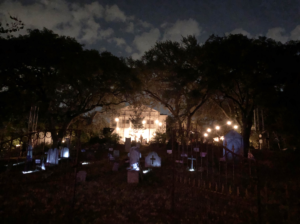
The bloody 1842 Battle of Salado occurred on the property between General Adrian Woll, Sam Houston and their troops and the less successful Mexican troops who were fighting for control of the area. A total of 60 men lost their lives on the hill, just 20 years before the mansion was built on the same soil.
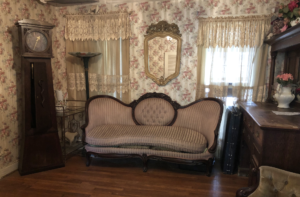 The current owner moved her family into the mansion in 1990 and operated her Victorian garment company from the extra space. Soon the family heard repeated door slammings, saw a “shadow man” who sometimes pinched the children hard enough to cause bruises and had to admit they weren’t the only “residents” at the Inn.
The current owner moved her family into the mansion in 1990 and operated her Victorian garment company from the extra space. Soon the family heard repeated door slammings, saw a “shadow man” who sometimes pinched the children hard enough to cause bruises and had to admit they weren’t the only “residents” at the Inn.
Eight or more spirits are said to roam the house and land, including a Confederate soldier, former owners (one of whom hung himself . . . or was murdered, depending on who you ask), and a blonde-haired little girl.
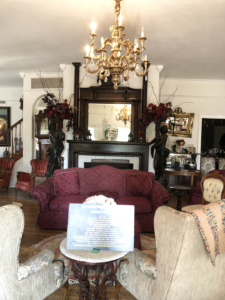 When I was invited to speak at a paranormal conference at the home a couple of years ago I enjoyed touring the interior, which is appropriately decorated and adorned with a heavy-hand. Victorian did love their “stylish clutter,” after all. The home needs quite a lot of work, but it’s easy to appreciate her beauty even through the chipping paint.
When I was invited to speak at a paranormal conference at the home a couple of years ago I enjoyed touring the interior, which is appropriately decorated and adorned with a heavy-hand. Victorian did love their “stylish clutter,” after all. The home needs quite a lot of work, but it’s easy to appreciate her beauty even through the chipping paint.
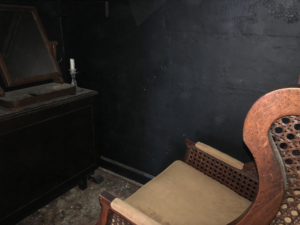 One of the most popular spots inside the house for the local “ghost hunters” was a small closet off the main parlor. The interior was painted black and a chair and antique mirror were set inside. The locals told me that if you sit in the chair – in the dark – and stare into the mirror, the spirits can communicate directly with you.
One of the most popular spots inside the house for the local “ghost hunters” was a small closet off the main parlor. The interior was painted black and a chair and antique mirror were set inside. The locals told me that if you sit in the chair – in the dark – and stare into the mirror, the spirits can communicate directly with you.
No, I didn’t “experience” anything while I was at the Black Swan, but perhaps I was just too distracted thinking about the talk I was about to give to the crowd.
If you’d like to see if you can detect anything otherworldly for yourself, the Black Swan Inn regularly hosts the “Haunted Cocktail Hour” and other events that are open to the public.
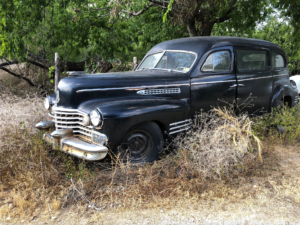
Are you brave enough to visit after dark?
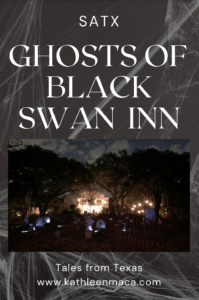


 Since the 1930s several different versions of the Goatman tale have circulated among locals. After all, most local legends are passed down verbally and change just a bit with each telling.
Since the 1930s several different versions of the Goatman tale have circulated among locals. After all, most local legends are passed down verbally and change just a bit with each telling. Late on a dark night in 1938, a lynch mob stormed the family’s shack and dragged the screaming Goatman to the bridge, where they put a noose around his neck and flung him over the side. And there’s a twist to the story: when the marauders went down the banks of the creek to admire their handywork…the noose was empty and Washburn was nowhere to be seen.
Late on a dark night in 1938, a lynch mob stormed the family’s shack and dragged the screaming Goatman to the bridge, where they put a noose around his neck and flung him over the side. And there’s a twist to the story: when the marauders went down the banks of the creek to admire their handywork…the noose was empty and Washburn was nowhere to be seen.
 Thinking he had escaped, they went back to the shack and set in on fire – with the unfortunate family inside – to lure Washburn out of the woods. But he was never seen again . . . at least in the flesh.
Thinking he had escaped, they went back to the shack and set in on fire – with the unfortunate family inside – to lure Washburn out of the woods. But he was never seen again . . . at least in the flesh. Goatman legends exist in several other towns in Texas and several other states, with slight variations. They probably serve more as a warning of morality than a reminder of an actual historical event. No African American named Oscar Washburn lived in the area at the time, and there were no reports of lynchings in 1938. But visitors persist in reporting strange smells and sights, being touched or grabbed and hearing snarling coming from the woods.
Goatman legends exist in several other towns in Texas and several other states, with slight variations. They probably serve more as a warning of morality than a reminder of an actual historical event. No African American named Oscar Washburn lived in the area at the time, and there were no reports of lynchings in 1938. But visitors persist in reporting strange smells and sights, being touched or grabbed and hearing snarling coming from the woods.



 The current owner moved her family into the mansion in 1990 and operated her Victorian garment company from the extra space. Soon the family heard repeated door slammings, saw a “shadow man” who sometimes pinched the children hard enough to cause bruises and had to admit they weren’t the only “residents” at the Inn.
The current owner moved her family into the mansion in 1990 and operated her Victorian garment company from the extra space. Soon the family heard repeated door slammings, saw a “shadow man” who sometimes pinched the children hard enough to cause bruises and had to admit they weren’t the only “residents” at the Inn.
 When I was invited to speak at a paranormal conference at the home a couple of years ago I enjoyed touring the interior, which is appropriately decorated and adorned with a heavy-hand. Victorian did love their “stylish clutter,” after all. The home needs quite a lot of work, but it’s easy to appreciate her beauty even through the chipping paint.
When I was invited to speak at a paranormal conference at the home a couple of years ago I enjoyed touring the interior, which is appropriately decorated and adorned with a heavy-hand. Victorian did love their “stylish clutter,” after all. The home needs quite a lot of work, but it’s easy to appreciate her beauty even through the chipping paint. One of the most popular spots inside the house for the local “ghost hunters” was a small closet off the main parlor. The interior was painted black and a chair and antique mirror were set inside. The locals told me that if you sit in the chair – in the dark – and stare into the mirror, the spirits can communicate directly with you.
One of the most popular spots inside the house for the local “ghost hunters” was a small closet off the main parlor. The interior was painted black and a chair and antique mirror were set inside. The locals told me that if you sit in the chair – in the dark – and stare into the mirror, the spirits can communicate directly with you.